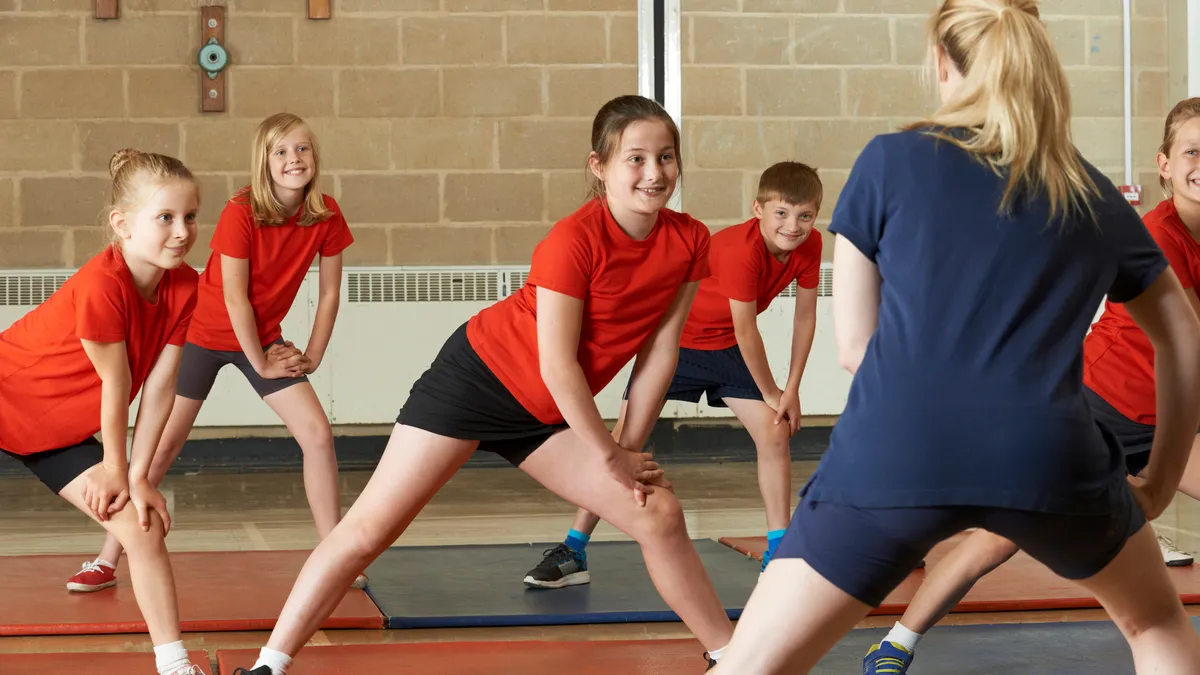The itchy T-shirt and drab mesh shorts. The loss of self-identity. The awkwardness of changing in front of classmates.
Those are some of the reasons students give for disliking mandatory uniforms for gym class.
But for teachers and school administrators, the pros and cons of physical education dress codes are a bit more complex. And what was once a standard ritual of middle and high schools is getting more relaxed in some locations.
Schools in New Jersey, Texas and Virginia have made changing clothes for PE class optional in recent years.
During the pandemic, and even in the years before, some schools eased requirements for mandatory PE uniforms or changing into PE attire. The concern during the pandemic was having students congregate in tight locker room spaces.
But other issues continued to arise, as well. Student anxiety about changing in front of peers, the time it took to change clothes, and whether policies were equitable for certain student populations led to some schools easing their dress codes.
Still, supporters of mandatory PE dress codes cite benefits to standardizing how students dress for gym class, such as safety, hygiene, encouraging active participation, and engendering a sense of school pride.
Many schools still require students to purchase and wear a specific PE uniform. For example, the website of Westwood Middle School in Spokane, Washington, said research shows "students who wear uniforms in a fitness class feel unified, accepted, happier and work harder."
"The goal of dressing in physical education has to do with [how] to facilitate movement," said Cara Grant, a director on the board at SHAPE America, which represents health and physical education professionals. "Reduced restriction based on clothing, this just doesn't work well when you're trying to move your body."
Best practices
SHAPE America does not have an official position on mandatory PE dress codes, said Grant, adding that those decisions are typically made at the school level. Grant is also pre-K-12 supervisor of health and physical education for Montgomery County Public Schools in Maryland.
The organization also doesn't track PE class dress policies. It does, however, have instructional practice guidelines that say it's inappropriate to base student grades on compliance with dressing requirements. Some states like California also have policies limiting circumstances in which dressing for PE class can count toward a student's PE grade.
By not tying grades to compliance with a dress code, the SHAPE America guidelines brought national visibility to the intention of dress policies, which is "to get kids moving and have them move in a safe way," Grant said.
She said since the pandemic, more schools are encouraging students to come to school in ready-to-move attire, such as athletic shoes and shirts and pants that support movement. But some schools had already begun to make changing for PE class optional for other reasons.
Students in middle and high schools are going through puberty and can feel uncomfortable changing in a group setting. LGBTQ students, in particular, can feel uncomfortable changing in locker rooms. Some students with certain religious beliefs said the PE dress codes weren't modest enough.
For students who are homeless or who live with divorced parents, bringing PE-approved clothing to school can be burdensome.
SHAPE America recommends schools provide private changing, showering and restrooms for transgender students but that transgender students not be required to use separate facilities.
If a school or district is considering altering its PE dress policy, Grant advises educators to focus on what they want students to know and be able to do regarding the PE class curriculum and how the school can support that.
"I think the bottom line is that physical education teachers want students to feel comfortable and competent," Grant said. "Making sure they're wearing appropriate shoes and clothes that empower and enable them to move" is thus the primary reason behind PE dress requirements, Grant said.




















